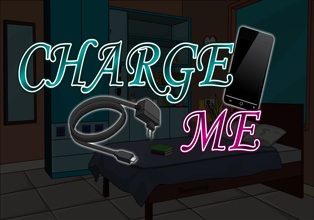
On the arcade “coin-op” machine, two pairs of buttons are used to fire and move the ship to the left and right directions. If you are lucky to find the “coin-op” arcade machine itself, then you can experience the original feel of this classic game. It's also advisable to turn it off if you know that you aren't going to be using it for a while rather than letting it slowly run out of battery while it's on the shelf not being used.Depth charge can be played on a computer connected to the internet through a supporting web browser. Conversely, if you store it fully charged for an extended period of time, the battery may lose some capacity, leading to shorter battery life."

If you store a device when its battery is fully discharged, the battery could fall into a deep discharge state, which renders it incapable of holding a charge. "Do not fully charge or fully discharge your device’s battery," explains Apple.
#Charge it to the game full#
Many companies, including Apple, believe that you should store your gadgets with around 50 per cent charge rather than full charge or no charge:


You can find the check in Settings, Battery, Battery Health. If you do use full charge cycles you'll find the battery suddenly stops taking as much charge and loses it faster and faster as it breaks down.Īpple iPhone users, for example, have a feature in iOS that will tell you the health of your battery and whether it's due for replacement. Rather than letting your laptop, phone or tablet completely die and then charge it from scratch you're better off to keep the battery topped up with lots of small charges, rather than a full cycle. Your lithium-ion battery has a limited number of charge cycles so it's best not to use them up. Where charging from nothing to full may have been good in the past we've got to reiterate it's now the opposite. Once you start using third party chargers you're entering risky territory where you may end up damaging your battery without realising it.
#Charge it to the game android#
While you can use any charger for a lot of phones, like Android devices, it's best to use the official one.Ĭhargers from the big brand names have been checked, checked and rechecked to perfection to ensure an optimum, and more importantly, steady charge. Both Android and iOS allow you to use Low Power Modes to extend the life of your battery over the day, allowing you to preserve your battery further. That's a lot easier with wireless charging. So charging in short bursts throughout the day is probably the best way to keep your phone going in both the short and long term. So where you previously thought letting a battery fully dissipate before charging was best you now need to do the opposite.Ī lithium-ion battery is best kept between 50 per cent and 80 per cent charged so as to use the charged ions and keep battery life prolonged. Battery memoryīattery memory is a pretty old concept that applied more to Ni-Cad batteries of old, rather than modern lithium-ion packs. You will probably notice your battery performance go down - cameras are especially prone to this on skiing trips, however the poor performance is normally only temporary and you should see usual battery life return once you get back to warmer conditions. Thankfully it's not the same for cold temperatures and batteries are far more suited to dealing with the cold. The company suggests that "Charging the device in high ambient temperatures can damage it further." Most devices are designed to work in a wide range of temperatures, say between 16 to 22 Celsius, but exposing your device to high temperatures regular above 35 degrees could damage it.Īpple for example will temporarily shut down your device if it gets too hot. It will save you fumbling to plug it in and mean you aren't using as much power to do so. One solution to slow down the charging is to use a wireless charger.

That said you'll be surprised how quick phones can charge today, so you don't really need to leave it charging for 8 hours. So it's perfectly safe to charge your phone overnight, just make sure it doesn't suffer from overheating. It’s also best to leave the phone on a flat, hard surface so the heat can dissipate easily. To avoid this it's best to remove any case on your phone when charging over night. The problems occur when the battery overheats, which can cause damage. The amount of charge going into your device shouldn't be an issue as most are smart enough to stop taking a charge once full, just topping up as needed to stay at 100 per cent. The myth about overcharging your phone is a common one. We've tried to dispel myths and clarify how your phone, tablet and laptop batteries work so you can get the longest life out of them day to day and in the long run. But when's best? Is overnight too much? Does keeping it topped up damage the battery? (Pocket-lint) - Modern smartphones, tablets and laptops with lithium-ion batteries take a lot of charging.


 0 kommentar(er)
0 kommentar(er)
